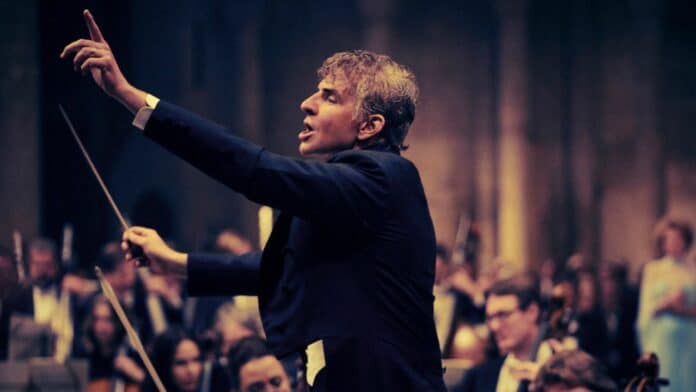Maestro chronicles the life of legendary musician Leonard Bernstein and his complicated lifelong relationship with Bernstein. The film is available to stream on Netflix.
Warning: This article contains heavy spoilers
Plot summary
In the 1940s, Leonard Bernstein stepped up from an assistant conductor to the New York Philharmonic to a conductor when Bruno Hill fell ill and he had to substitute for him. His debut is met with a loud reception.
He lives life as a homosexual man, and his relationship with Clarinist David Oppenheim comes to a close when he meets Felicia Montealegre Cohn Bernstein at a party.
In 1951, they married and had three children. By the middle of the decade, he had become a famous name and had composed several successful Broadway musicals and operas. Meanwhile, she devoted herself fully to the family.
They frequently threw lavish parties while Leonard became increasingly jaded, burned out, and bitter. He was also having affairs with men. Felicia tried ignoring the affairs at first.
However, as time passed by, she was over it and during one heated argument, she lashed out at him and said that if he didn’t accept himself he was going to die a lonely, old queen, saying he had hate in his heart.
They separate for a while and she tries dating other men and finds little success with that. At his 1973 legendary conduction of Mahler’s Resurrection Symphony, she visits him and the two reconcile.
Later, she is diagnosed with lung cancer and Leonard moves back with her and takes care of her until she dies in 1978. He and his children soon leave their homes after her death.
In the present day, an old Bernstein reminisces about her during an interview, as Maestro rolls the credits.
Ending explained
Felicia’s death
Felicia is diagnosed with lung cancer a few years after she has reconciled with Leonard, after his famous performance at the Ely Cathedral, in England.
Leonard is present when the doctor informs them about Felicia’s cancer, and comforts and consoles her during a heavy moment.
He moves in back with her and devotedly spends time with her. Despite many surgeries and chemotherapy treatments, Felicia couldn’t weather the storm and passed away in 1978.
The fractured relationship
Felicia and Leonard meet at a party and the chemistry between the two is instantaneously aflame. In 1951, after years of their relationship, the two marry each other, after Felicia proposes.
They have immense love and admiration for each other. However, as the years go by, their marriage begins getting weighed down by the cobwebs of estrangement.
This comes about because of his sexual orientation, something that Leonard was never able to accept. He was a homosexual man but he couldn’t come to terms with accepting it.
Meanwhile, he also had an existential dread as a maestro and as he deteriorated in his creative output, his misery affected those around him. Felicia, well aware of his sexual orientation and the inability to accept his true self, has had enough.
She lets him know how he’s only hurting himself and his loved ones by not accepting his truth during a heated exchange on Thanksgiving. The two split up shortly, and live separately.
She tries giving dating a shot but it doesn’t work out for her. Meanwhile, he keeps having affairs but the two reconcile after a gut-wrenching, legendary performance in England.
When they learn that Felicia has cancer, they only become closer, until her death sets them apart.
Years after her death, the maestro composer/conductor keeps her in his mind so intensely he admits to seeing her ghost every now and then.
Also Read: The Rope Curse 3 ending explained: Does Kuan-Yu defeat the demon?

